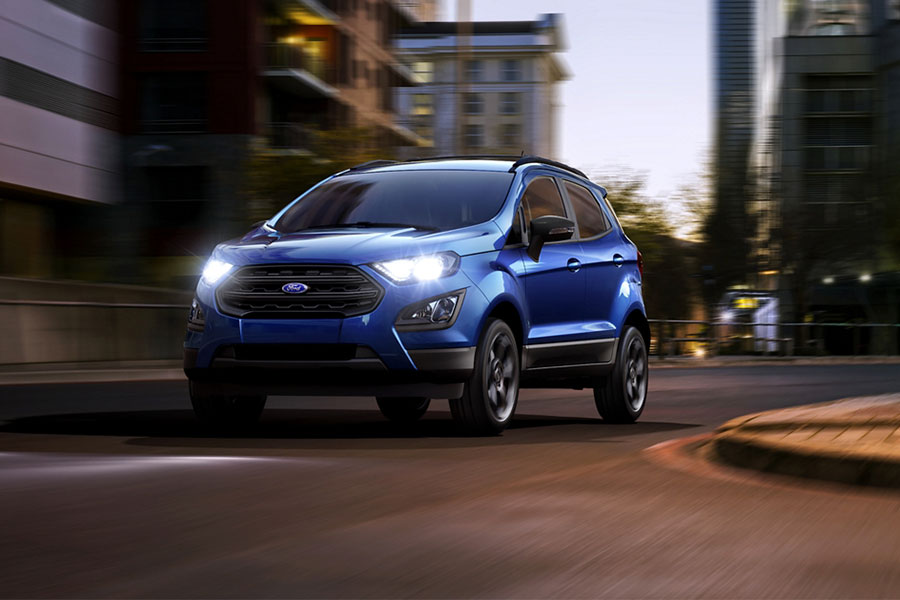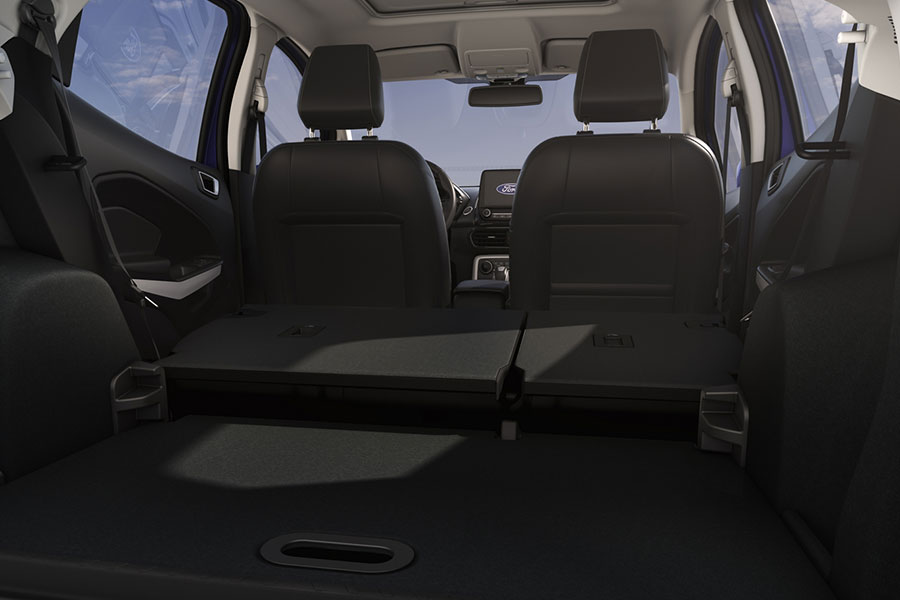When it comes to five passenger compact crossovers, two comparable options are the 2020 Ford EcoSport and the 2020 Mazda CX-3. Here is a short comparison of the two vehicles to hopefully help you determine which one is right for you.
Available Trims = EcoSport
The CX-3 only comes in two trims; the Sport Front Wheel Drive and the Sport i-ACTIV All Wheel Drive. The EcoSport has four available trims which opens your options up a bit more when it comes to better personalization to suit your needs.

Price Point = CX-3
Because the CX-3 comes in two trim options and the EcoSport comes in four, the price range for the EcoSport varies a lot more than the CX-3. The base prices for the two CX-3 models are $20,640 and $22,040. The base prices for the EcoSport range from $19,995 to $27,380. Depending on your budget, that may play a part in your decision.
Fuel Efficiency = CX-3
Both the CX-3 and EcoSport have two engine options and therefore two different fuel consumption numbers. The CX-3 All Wheel Drive engine has an EPA estimated 27 mpg City / 32 mpg Highway, and the All Wheel Drive engine has an EPA estimated 29 mpg City / 34 mpg Highway. The Front Wheel Drive version of the EcoSport gets 27 mpg City / 29 mpg Highway and the 4 Wheel Drive version gets 23 mpg City / 29 mpg Highway. If a high MPG is your only concern when purchasing a new vehicle, then the CX-3 does have an edge over the EcoSport..

Cargo Space = EcoSport
Even though the EcoSport is almost a foot shorter in length, it has a cargo space of 20.9 cubic feet behind the rear seats and a total of 50 cubic feet if the second row is folded down. While the CX-3 only has 17.8 cubic feet of cargo space behind the back seat and a total of 42.7 cubic feet if the second row of seats is folded down. The clear winner for this category is the EcoSport.
Passenger Room / Comfort = EcoSport
Once again, regardless of the shorter length, the EcoSport has about an inch more room when it comes to each passenger’s headroom, shoulder room, hip room and leg room. On paper, one inch doesn’t seem like much, but in person, that one inch makes all the difference when it comes to comfort.
Maneuverability = EcoSport
They both have about the same turning radius and will give you the ability to navigate even the tightest turns and roadways. However, the power of the EcoSport outdoes the CX-3 by just enough to make a big difference. The EcoSport gets up to 166 HP and 149 lb. ft. of torque when equipped with the 2.0L engine option. The CX-3 only gets up to 148hp and 146 lb. ft. of torque when equipped with its 2.0L engine option. On top of being just a bit more powerful, the EcoSport is also just a bit easier to park because of the difference in length.

Infotainment / Charging = EcoSport
The CX-3 has a 7” touchscreen display and one Auxiliary audio input, one USB audio input, and a 12V powerpoint. On the other hand, the EcoSport has up to an 8” touchscreen display and also has double the amount of powerpoints. The EcoSport has two standard powerpoints, two 12V powerpoints, two smart-charging USB ports and an optional 110V power outlet. Once again, the EcoSport appears to edge out its CX-3 competitor.
Review
With the many aspects we looked at today, it is clear that the EcoSport continually comes out on top in almost every category--the two exceptions being the price point and fuel efficiency. When it comes down to price point, depending on the features you are really interested in, both the two most cost effective models of the EcoSport and both models of the CX-3 share the same price point. Where fuel efficiency is concerned, the Front Wheel Drive EcoSport is pretty comparable to both models of the CX-3. The biggest difference in fuel economy of the EcoSport is when you switch to the 4 Wheel Drive engine option. The fuel efficiency does decline a little when the Intelligent 4WD system is added, however, for a 4 Wheel Drive vehicle, the fuel efficiency is still pretty impressive. Ultimately the choice is yours, but when put side by side, the EcoSport has some real benefits that can’t be disregarded.